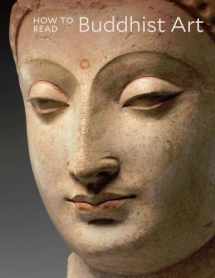
How to Read Buddhist Art (The Metropolitan Museum of Art - How to Read)
ISBN-13:
9781588396730
ISBN-10:
1588396738
Author:
Kurt A. Behrendt
Publication date:
2020
Publisher:
Metropolitan Museum of Art
Format:
Paperback
136 pages
Category:
Arts Collections
,
Criticism
,
Arts History & Criticism
FREE US shipping
on ALL non-marketplace orders
Rent
35 days
Due Jun 23, 2024
35 days
from $31.72
USD
Marketplace
from $51.64
USD
Marketplace offers
Seller
Condition
Note
Seller
Condition
Used - Good
Book details
ISBN-13:
9781588396730
ISBN-10:
1588396738
Author:
Kurt A. Behrendt
Publication date:
2020
Publisher:
Metropolitan Museum of Art
Format:
Paperback
136 pages
Category:
Arts Collections
,
Criticism
,
Arts History & Criticism
Summary
How to Read Buddhist Art (The Metropolitan Museum of Art - How to Read) (ISBN-13: 9781588396730 and ISBN-10: 1588396738), written by authors
Kurt A. Behrendt, was published by Metropolitan Museum of Art in 2020.
With an overall rating of 4.3 stars, it's a notable title among other
Arts Collections
(Criticism, Arts History & Criticism) books. You can easily purchase or rent How to Read Buddhist Art (The Metropolitan Museum of Art - How to Read) (Paperback) from BooksRun,
along with many other new and used
Arts Collections
books
and textbooks.
And, if you're looking to sell your copy, our current buyback offer is $3.97.
Description
An indispensable introduction to the evolution of Buddhist imagery from its origins in India through its spread to China, Japan, and South Asia
For more than 2,000 years, sublime works of art have been created to embody essential aspects of Buddhist thought, which developed and evolved as its practice spread from India to East Asia and beyond. How to Read Buddhist Art introduces this complex visual tradition to a general audience by examining sixty seminal works. Beginning with the origins of representations of the Buddha in India, and moving on to address the development of Buddhist art as the religion spread across Asia, this book conveys how Buddhist philosophy affected artistic works and practice across cultural boundaries.
Reliquaries, sculptures, and paintings produced in China, the Himalayas, Japan, Korea, and South and Southeast Asia provide insight into the rich iconography of Buddhism, the technical virtuosity of their makers, and the social and political climate in which they were created. Beautiful photographs of the artworks, maps, and a glossary of the major Buddhist deities offer an engaging and informative setting in which readers—regardless of their familiarity with Buddhism—can better understand the art related to the religion’s practices and representations.
For more than 2,000 years, sublime works of art have been created to embody essential aspects of Buddhist thought, which developed and evolved as its practice spread from India to East Asia and beyond. How to Read Buddhist Art introduces this complex visual tradition to a general audience by examining sixty seminal works. Beginning with the origins of representations of the Buddha in India, and moving on to address the development of Buddhist art as the religion spread across Asia, this book conveys how Buddhist philosophy affected artistic works and practice across cultural boundaries.
Reliquaries, sculptures, and paintings produced in China, the Himalayas, Japan, Korea, and South and Southeast Asia provide insight into the rich iconography of Buddhism, the technical virtuosity of their makers, and the social and political climate in which they were created. Beautiful photographs of the artworks, maps, and a glossary of the major Buddhist deities offer an engaging and informative setting in which readers—regardless of their familiarity with Buddhism—can better understand the art related to the religion’s practices and representations.


We would LOVE it if you could help us and other readers by reviewing the book
Book review

Congratulations! We have received your book review.
{user}
{createdAt}
by {truncated_author}


